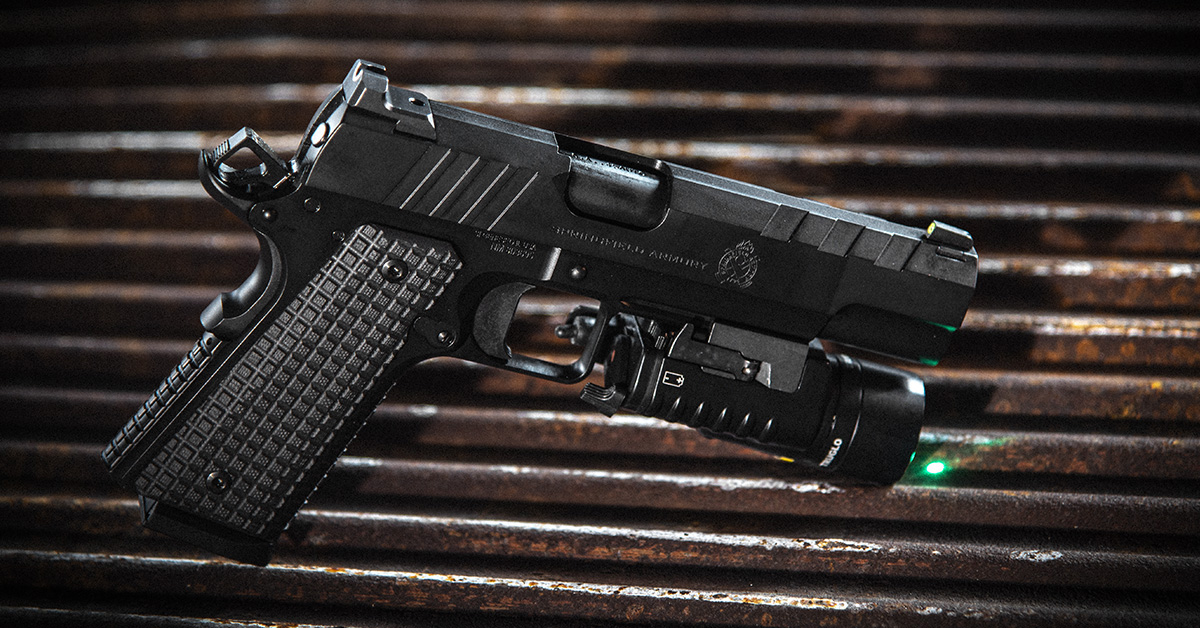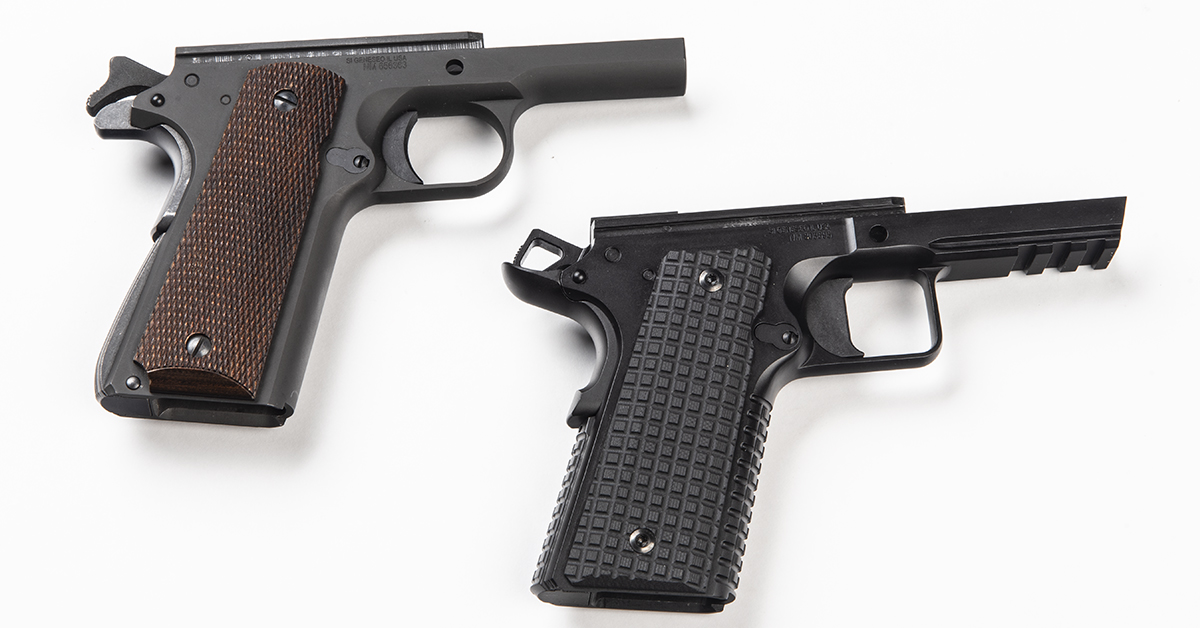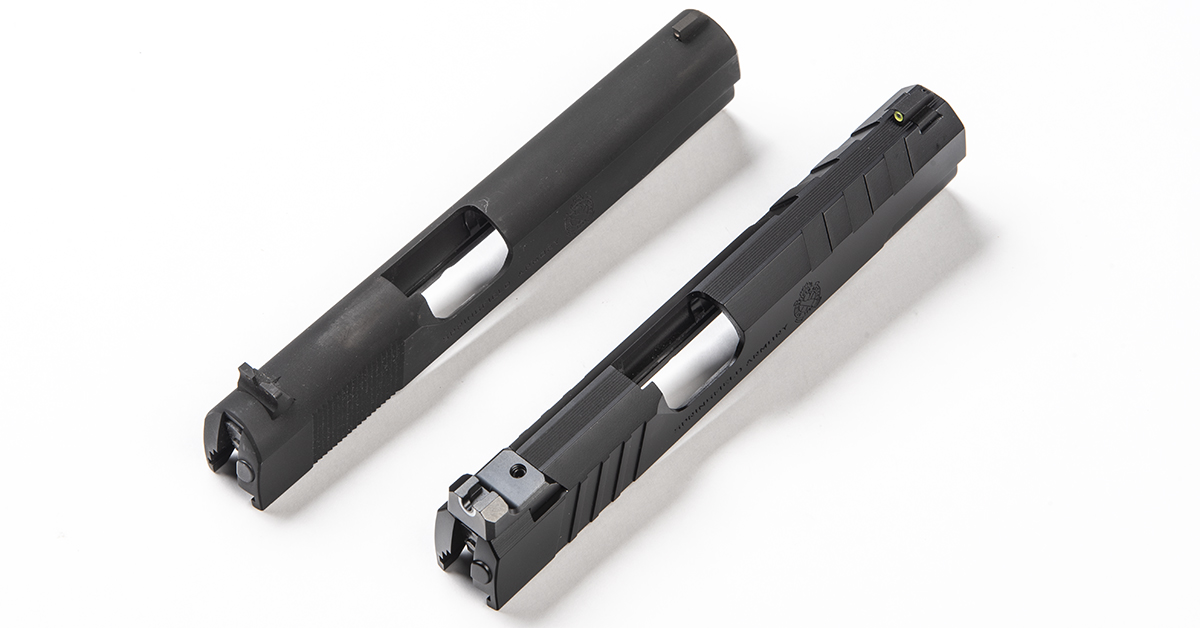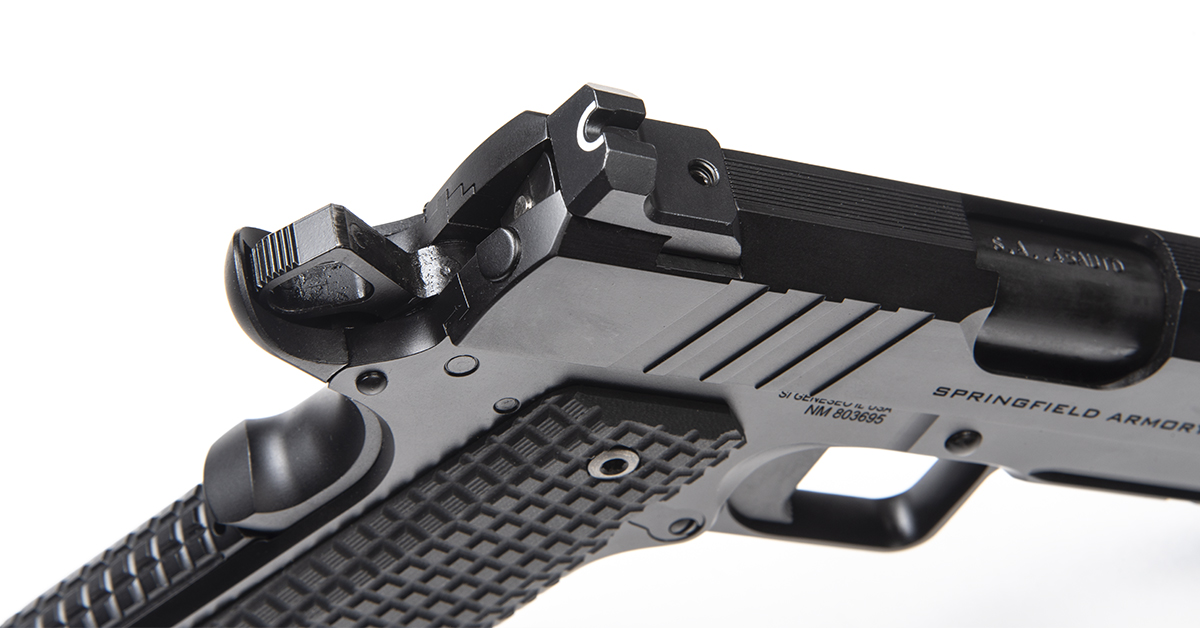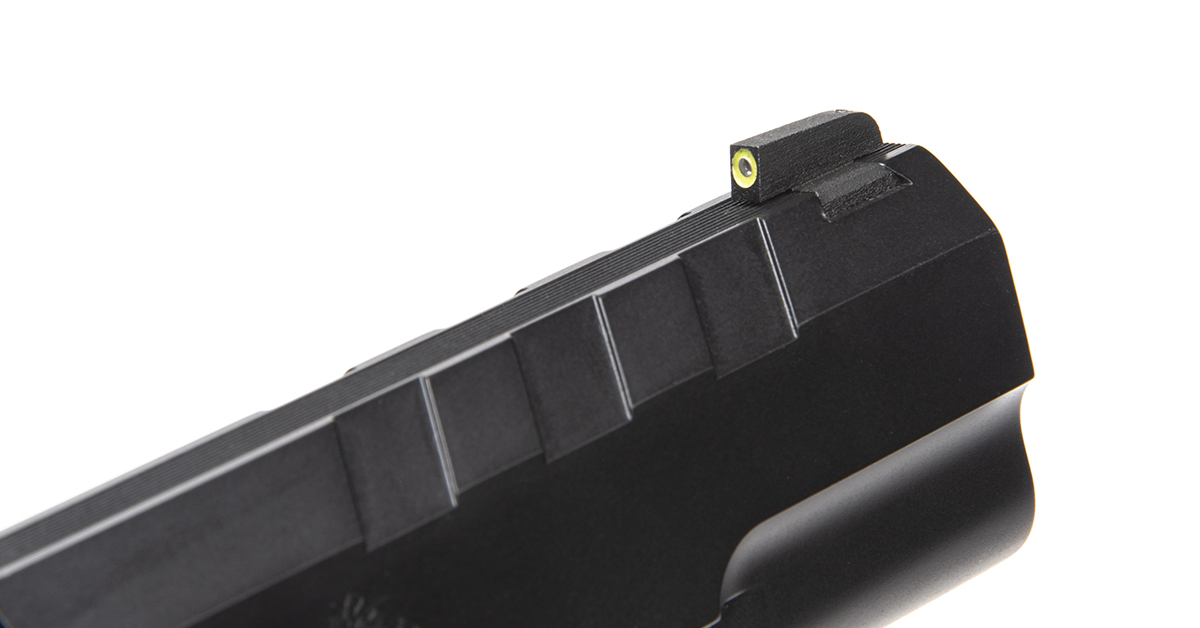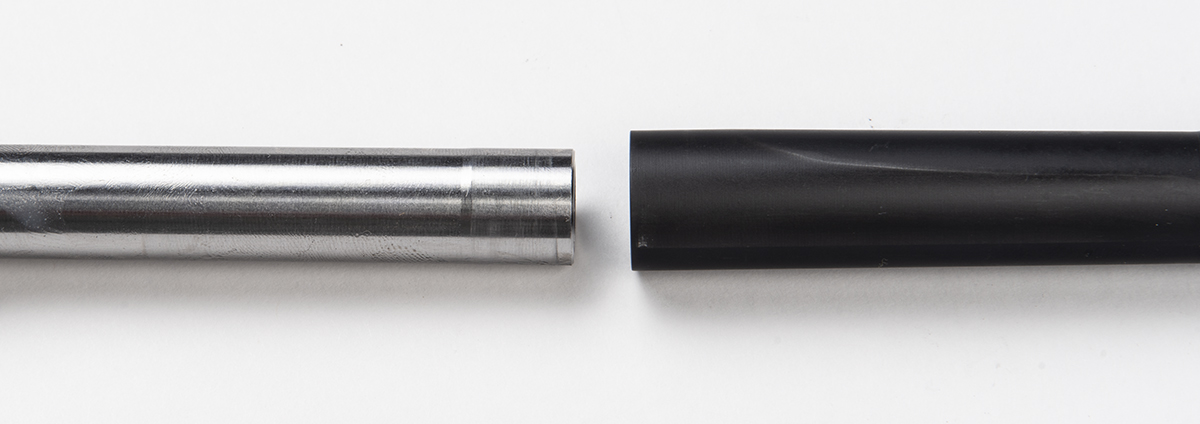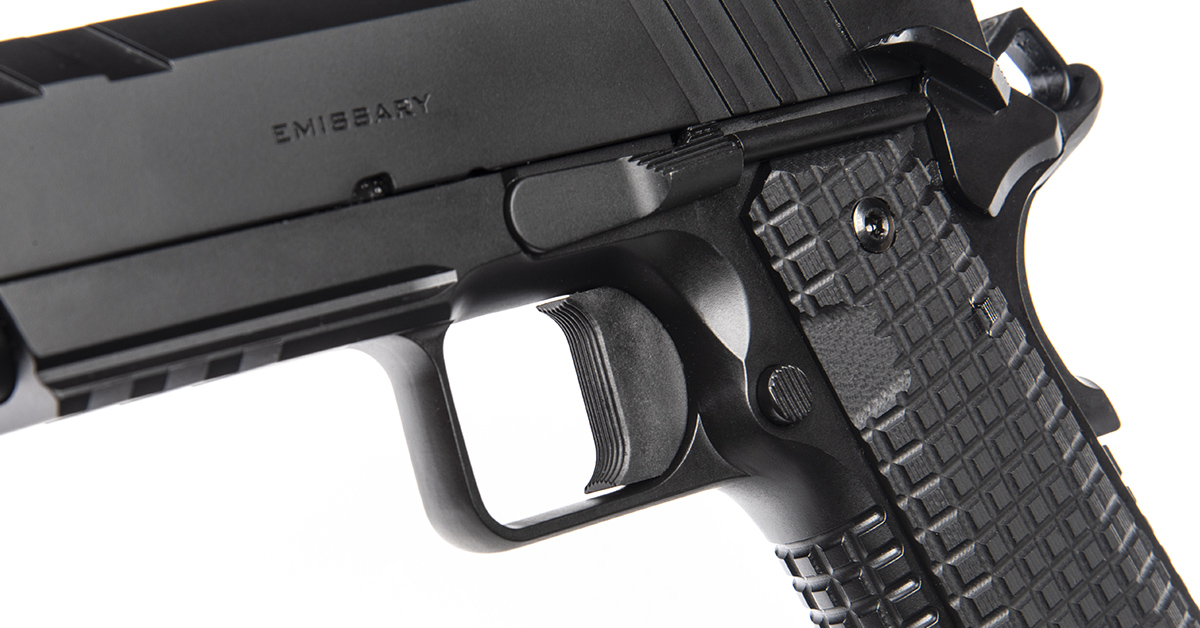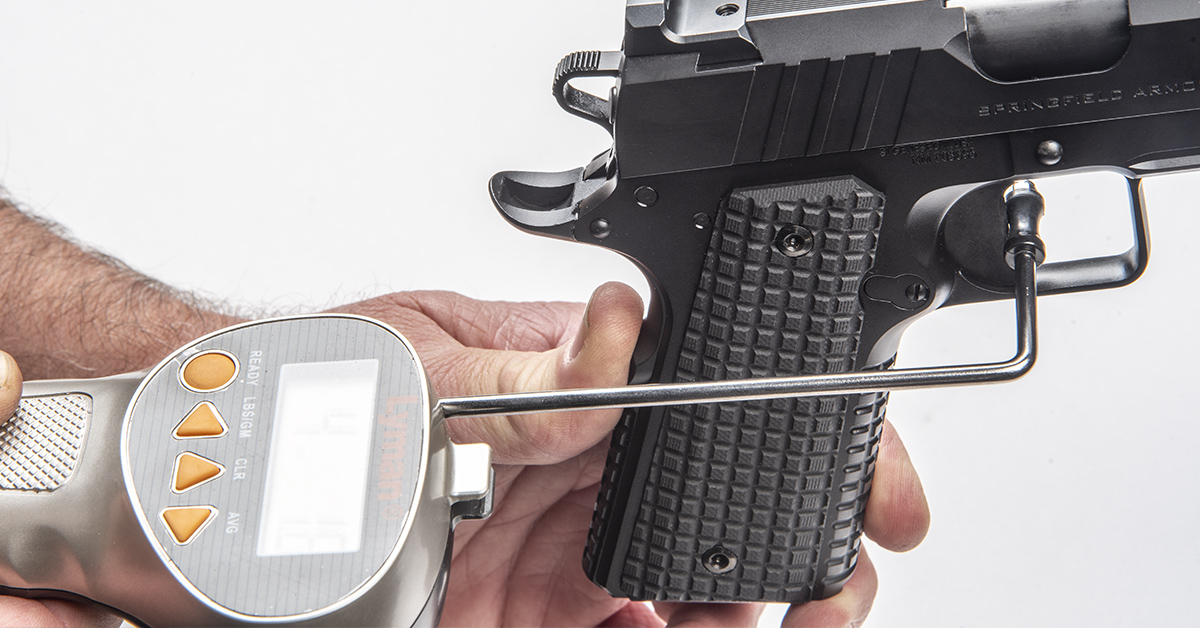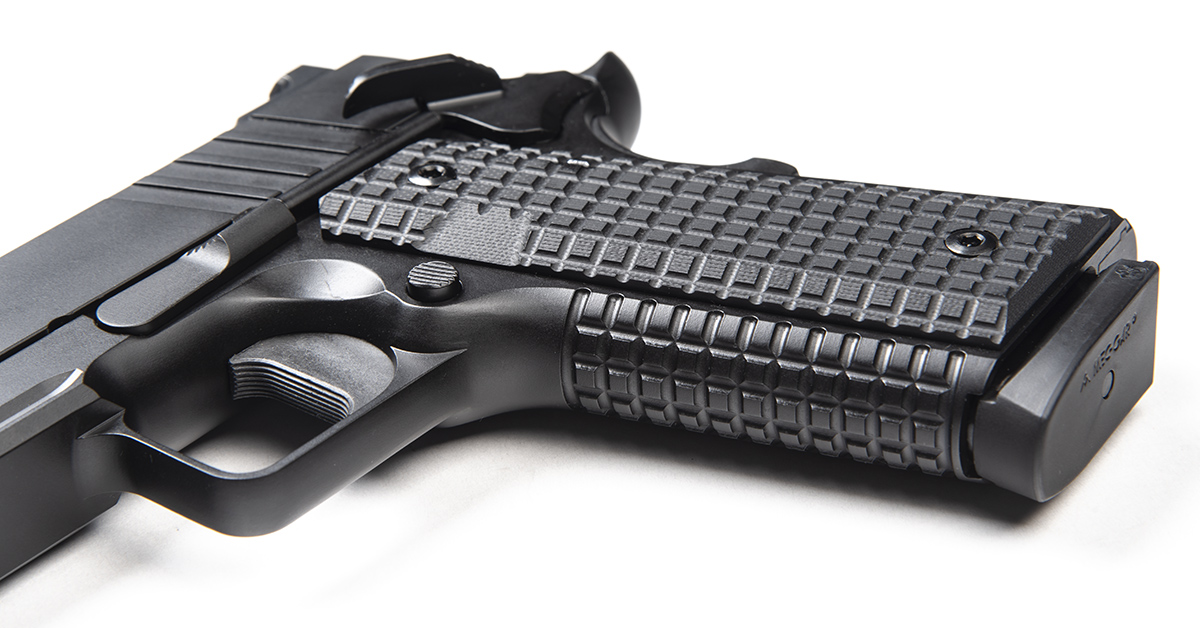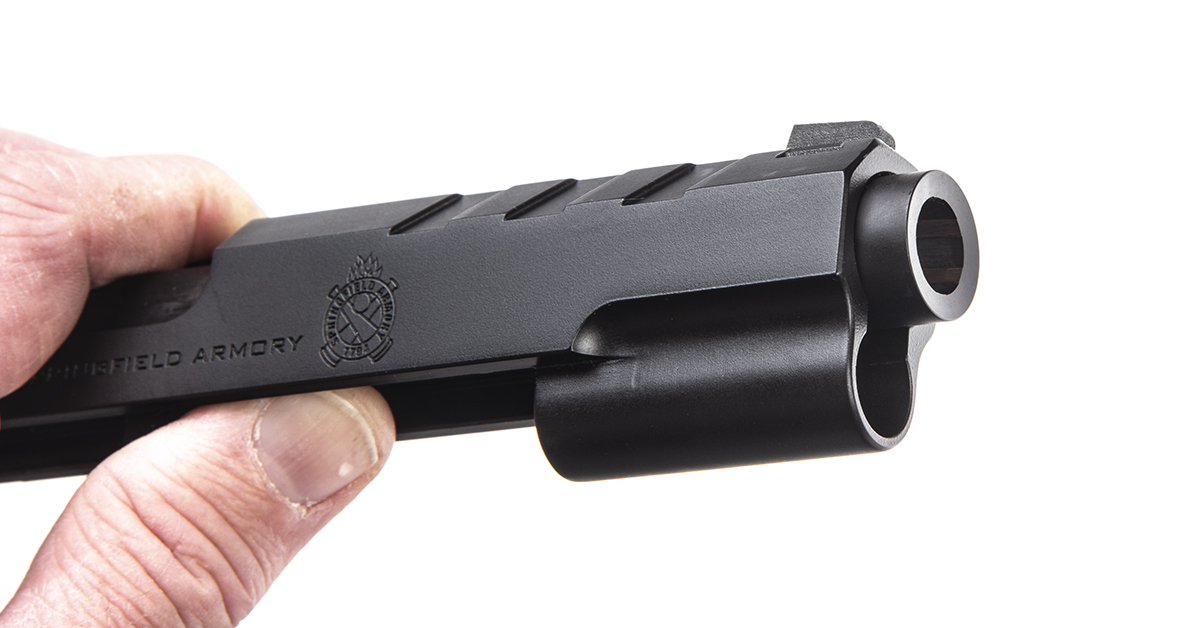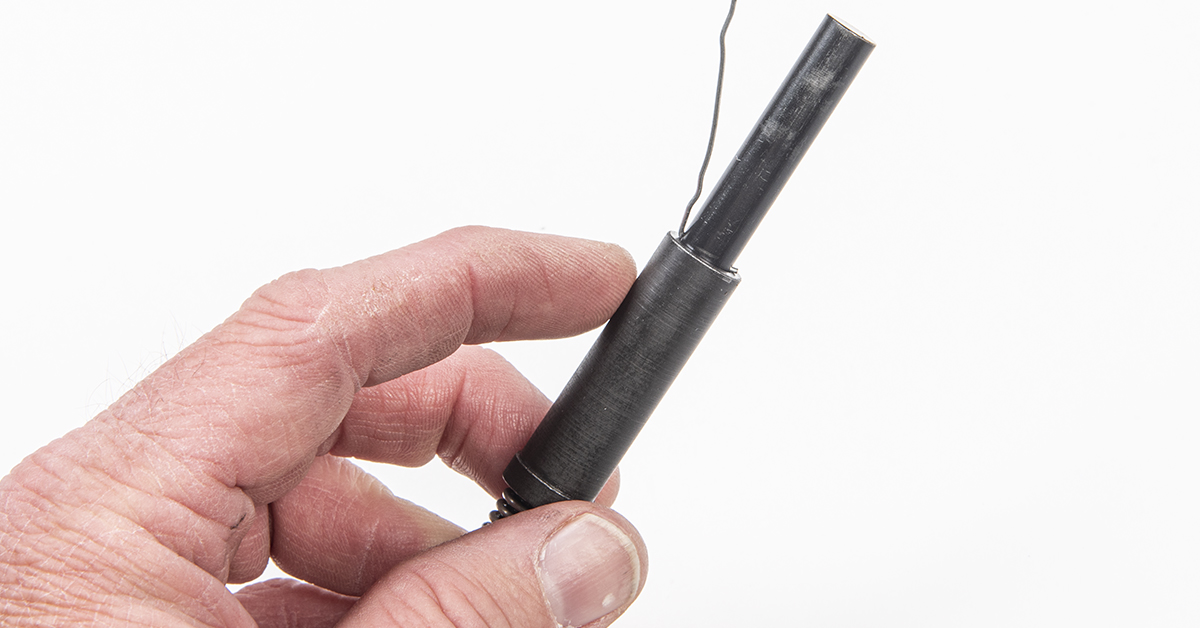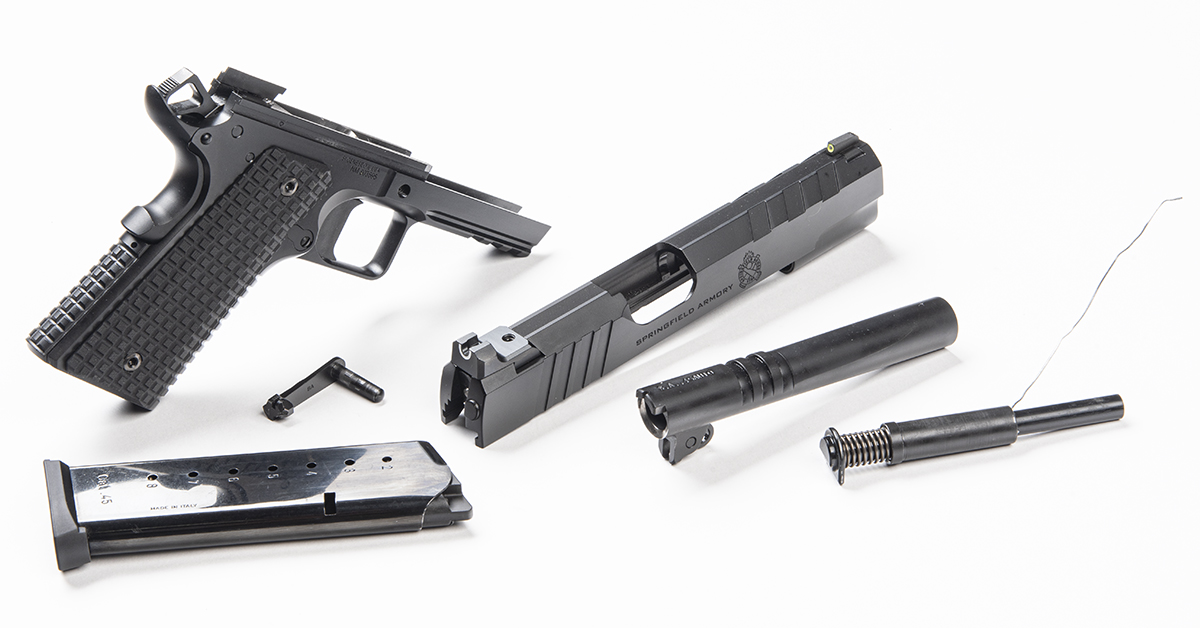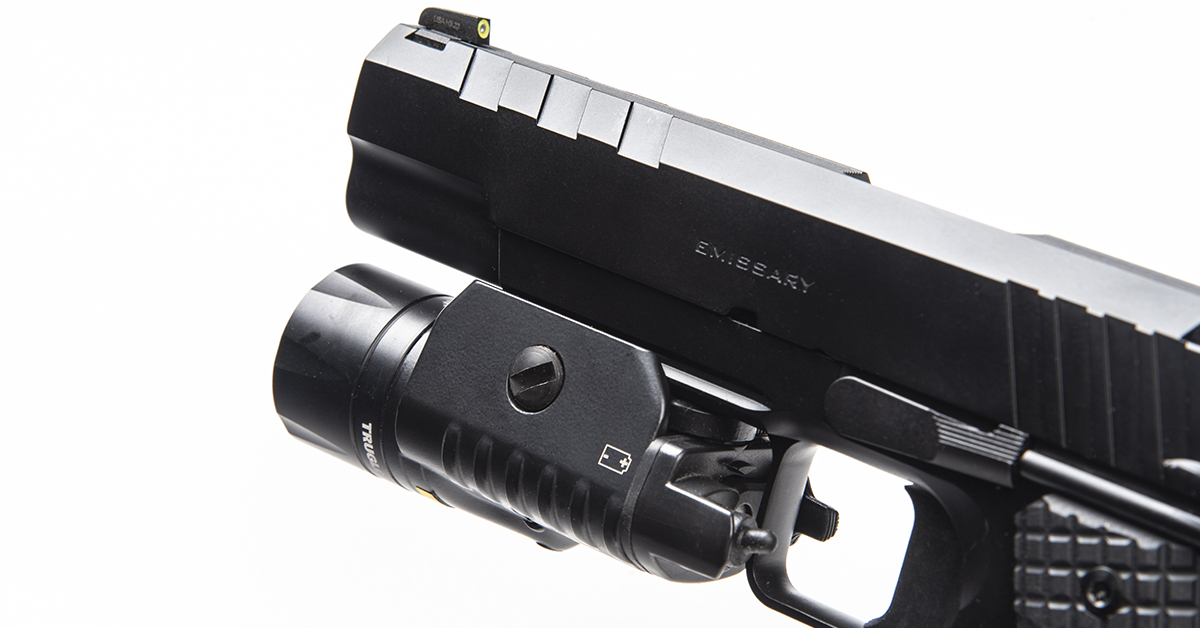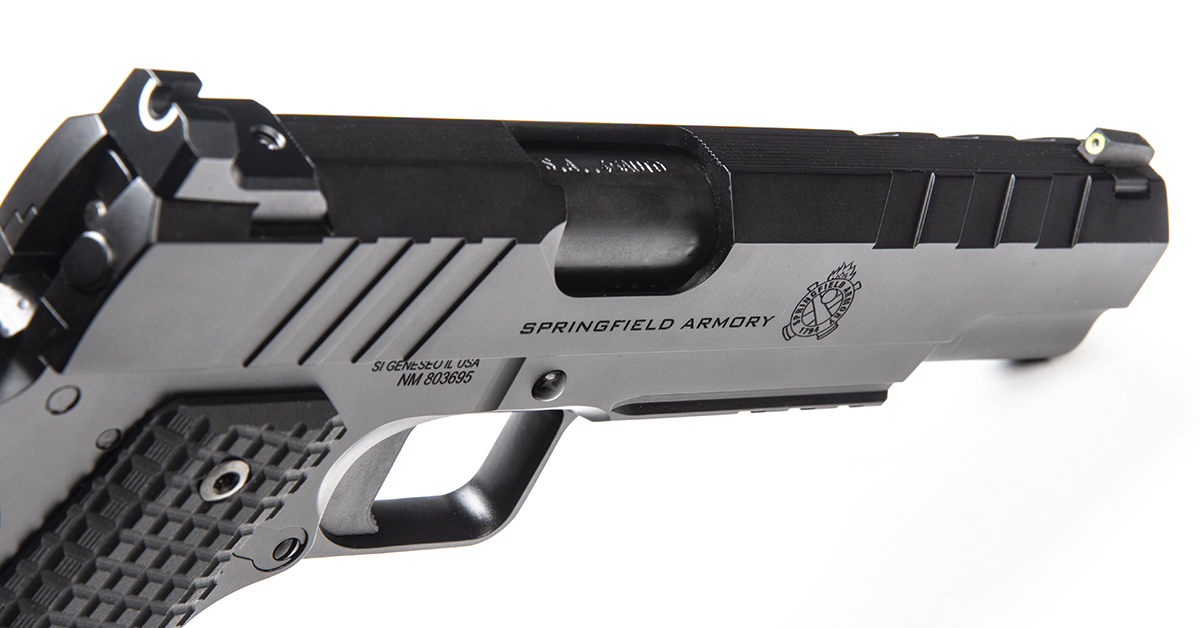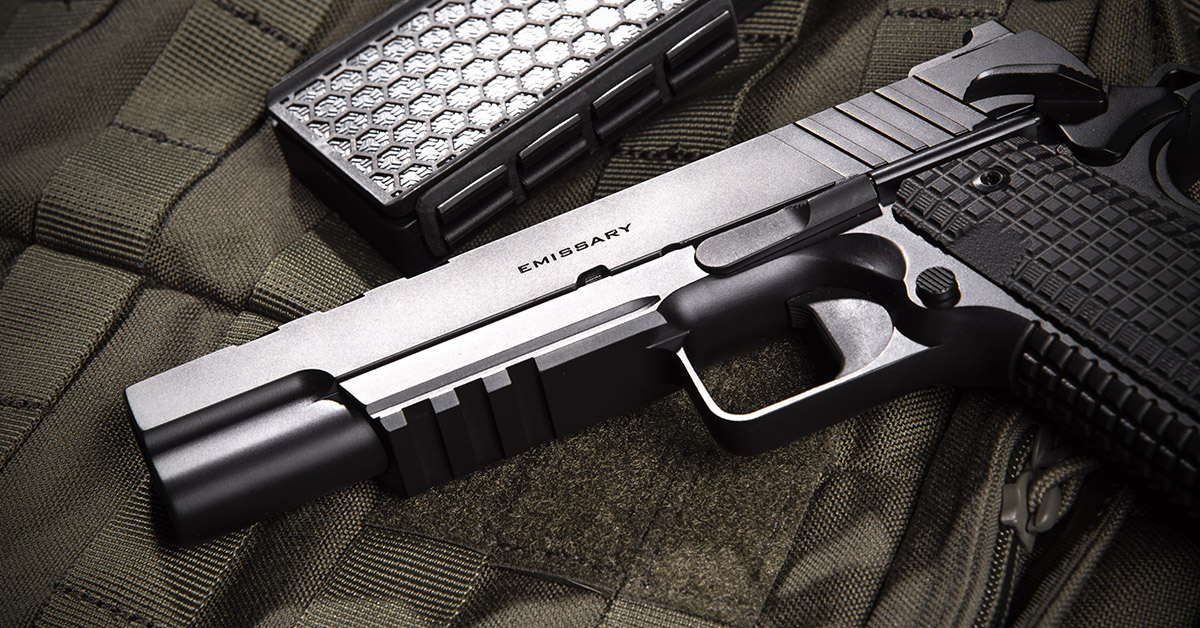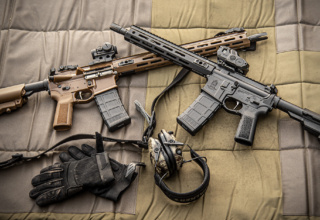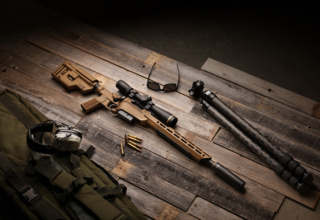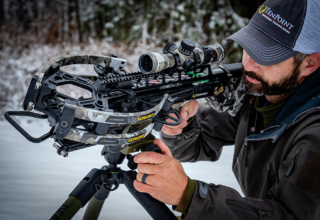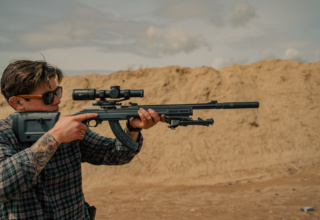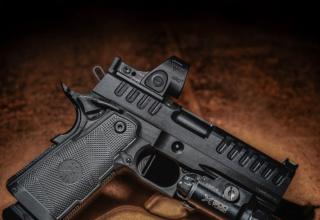Springfield Armory’s latest installment in the Emissary series delivers the precision performance we expect in a refined, modern-day 1911 with an elegant all-black finish that will make you want to say, “Shaken, not stirred”
by Rob Reaser
I’ve said it many times to anyone who will listen…there is no handgun in the world that so stirs my soul and refuses me to leave the firing line until all ammo is reduced to smoky, empty brass as does a classic 1911. While this iconic firearm is well over 100 years old, the platform remains, to my mind, the pinnacle of handgun engineering and ergonomic design. I’ll go so far to say that there will never be a semi-auto that can rival this steel frame, single-stack wonder…ever. History may prove me wrong, but I’m confident that a more sublime piece of firearm machinery will not emerge in what’s left of my lifespan.
So, yes, I get excited about 1911s. No apologies.
Yet as fine as the 1911 is in its original configuration, there is always room to tweak around the edges. Custom gun makers have been performing delicious operations to the 1911 for years, applying their machining arts to deliver variants with glass-smooth mechanical operation and amping accuracy potential to a level that stretches beyond the capabilities of all but the most gifted shooters. Of course, with that performance comes a price tag that most of us will never be able to satisfy.
Enter the Springfield Emissary.
When the Emissary rolled out a couple years ago, I wanted to give it a go, but Shoot On’s ace handgun writer Bob Campbell approached me with first dibs. Being the honorable sort in such matters, I decided not to pull rank and said, “Enjoy!” You can read Bob’s fine review on the debut Springfield Emissary here.
Then, about a month ago, our friends at Springfield gave us the heads up on the next line extension of the Emissary 1911. This time, the only “first dib” was going to be mine!
Mechanically, the newly released Emissary is identical to the first models that came out in .45 ACP and 9mm chambering, sporting either a traditional 5-inch or a slightly more compact 4.25-inch barrel configuration. The difference is that the new model comes in an all-black Cerakote finish rather than the debut Emissary’s two-tone scheme. Since there is no need paddle the same waters, check out Bob’s review for the deep dive. What we’ll do here is highlight the new Emissary model, taking more of a compare/contrast approach to Springfield’s MILSPEC 1911.
If you want to summarize the Emissary, you may consider it to be a contemporary interpretation of the original (aren’t all variants?) steel frame, single-stack 1911. These two features are important because they hold to the attributes that have made the 1911 the halo handgun for generations of competitive shooters, warfighters, and personal defense adherents. The solid heft of the forged steel frame promises durability and a kind of confidence that many find lacking in the infinitely more popular polymer-framed striker-fired handguns of today. With that heft also comes cherished performance features, like a smoother shooting experience courtesy of reduced felt recoil and increased sight picture stability via the platform’s inherent weight. The single-stack magazine, while handicapping those who favor a high round count, allows for a svelte grip design offering a secure, anchor-like hold that works with a broad range of hand sizes.
Here, you can see that the Emissary (bottom) generally holds to the original’s (top) profile, but with some key differences. There is, of course, the flat mainspring housing on the back of the grip, which Springfield uses on all its 1911 variants, versus the Springfield MILSPEC’s original-style arched mainspring housing. Also flat of profile is the Emissary’s grip panels, contrasting to the original radiused walnut grip. While I enjoy the fuller, rounded grip of the MILSPEC model, the more squared Emissary grip proved solid and stable on the range. For enhanced concealment, the Emissary takes the lead.
Also unique to the Emissary within the Springfield 1911 lineup is the squared front of the trigger guard. Not being one to hook my support hand index finger on the trigger guard, this feature is wasted on me. It does, though, introduce a dash of contemporary styling to the classical profile.
The slide is where the Emissary takes a radical departure from its progenitor. The Emissary is all about crisp angles and expansive flats. Linking the front and rear sights is a flat top with full-length serrations to minimize glare. The shoulders slope sharply down with forward serrations Springfield calls a Tri-Top cut. This design cue follows to the rear of the slide to provide a strong purchase for slide manipulation.
Although I slightly favor the MILSPEC 1911’s minimalist sight picture silhouette, the practical advantage goes to the Emissary’s white outlined U-notch rear sight. I found it quick to settle the front post within the notch, and the white outline is a definite plus in low light conditions.
Speaking of low light, the front post incorporates a tritium element and high-visibility focus ring. Settle the ring in the notch, align with the target, and pull the trigger.
Back to our MILSPEC vs. Emissary comparison, the Emissary comes with a heavy-profile bull barrel. As you can see from this side-by-side, it is significantly beefier than the standard barrel on the left. I can’t say that the barrel promotes accuracy that is any better than the MILSPEC barrel because both guns proved equally capable of producing tight knots on target, but the added weight certainly helps in stabilizing the gun during unsupported fire, and there was a slight reduction in perceived muzzle flip.
A flat trigger face is part of the Emissary equation. I prefer the original curved trigger face, but the flat trigger, with its crisp corners, definitely offers more bite for the trigger finger and assists in maintaining finger positioning during fast-fire exercises.
Regarding trigger performance, I can detect no difference between the MILSPEC and the Emissary. Both present a firm wall at the end of the take-up and a short, decisive sear travel before the break. Average pull weight of the Emissary clocked 3 lbs., 12.5 oz. on my scale — a fine number that balances accuracy potential with operational security.
One thing I do appreciate is the Emissary’s grip texturing. Although it seems to offer less acreage than the MILSPEC grip, the machined “grenade” texturing on the front and back straps combine with the VZ G10 grip panels to deliver the sort of cling factor you want in a defensive arm.
One looming difference between the standard design and the Emissary is that there is no barrel bushing supporting the bull barrel. Instead, the barrel is supported by the slide alone with the kind of close-tolerance fitment you expect to find in a premium custom 1911.
This, of course, demands a significantly different type of guide rod and recoil spring assembly. The guide rod and recoil spring assembly are captured as a unit by inserting a wire or similarly small tool through a hole in the guide rod while the spring is under compression. From here, the assembly is simply removed from the slide.
Aside from capturing the guide rod and recoil spring assembly, plus the lack of a barrel bushing, disassembly of the Emissary follows the standard 1911 takedown procedure. Cleaning and lubrication are equally simple.
In keeping with the modern trend of accessorizing defensive handguns, the Emissary integrates a Picatinny rail into the slide, satisfying the needs of those who prefer weapon-mounted lights and lasers.
The Emissary All-Black’s reason for being, though, is its elegant monotone finish. The all-black Cerakote finish across the slide and frame is rich, elegant, and presence a stealthy, all-business attitude that many favor in a defensive handgun. The finish texture is something of a silk/matte hybrid. It is smooth enough to add a luxurious, penetrating depth to the precision-machined steel yet has just enough surface disruption to prevent hot spots or glare. Consider it a sophisticated finish perfectly matched for a sophisticated shooting machine.
In sum, the Emissary is a true fighting gun that exhibits the handling and performance characteristics that have helped make the 1911 the preferred semi-auto platform of enthusiasts and defense professionals for generations. Dressed in a rugged, all-black finish and sporting several custom-level design cues and engineering updates, this is a firearm that expertly bridges the gap between American classic and modern-day defender while losing nothing in the translation.
Springfield Emissary All-Black 1911 Specifications (as tested)
- Caliber: .45 Auto
- Slide: forged carbon steel w/black Cerakote
- Recoil System: one-piece full-length guide rod
- Frame: forged stainless-steel w/black Cerakote
- Sights: Tactical Rack U-notch rear, tritium/luminescent front post
- Grips: VZ Grips Thin-Line G10
- Barrel: 5-in. forged stainless steel, nitride coated, match-grade bull
- Twist Rate: 1:16
- Magazines: (2) 8-round
- Length: 8.4 in.
- Weight: 43 oz.
- Height: 5.25 in.
- MSRP: $1,378

